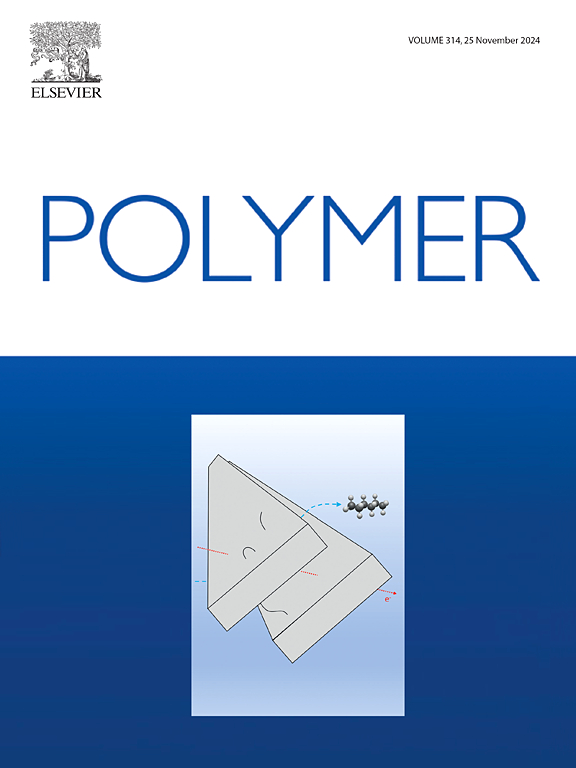Unraveling the biaxial deformation mechanism of isotactic polypropylene film via in-situ synchrotron radiation X-ray scattering
IF 4.1
2区 化学
Q2 POLYMER SCIENCE
引用次数: 0
Abstract
The structure evolution of polymers during biaxial stretching presents a complex, critical challenge in both polymer industry processing and polymer physics. Despite its significance, biaxial deformation of polymers at high temperature has been less studied due to experimental difficulties, leaving underlying mechanism poorly understood. Here we employ a self-developed in-situ biaxial stretching device combined with synchrotron radiation small and wide-angle X-ray scattering (SAXS and WAXS) to track the real-time structural evolution of isotactic polypropylene (iPP) films under sequential (SEQ) and simultaneous (SIM) biaxial stretching. Our results reveal distinct deformation pathways. In the first step of SEQ stretching, the initial linear deformation is governed by lamellar separation, interlamellar shear, and lamellar rotation, followed by coarse slip-induced yielding. Subsequent melting-recrystallization equilibration maintains constant crystallinity while forming fibrous crystals. During the second SEQ stage, stretch-induced melting dominates initially, and the chain reorganization drives the formation of new crystals. In contrast, SIM stretching primarily involves crystal melting. Lamellae undergo separation, shear, and slip, followed by progressive melting, first in thinner lamellae, then within lamellar clusters. Notably, recrystallization is suppressed in SIM due to the absence of in-plane orientation, underscoring chain alignment, rather than entropy reduction, as the primary driving force for recrystallization.


求助全文
约1分钟内获得全文
求助全文
来源期刊

Polymer
化学-高分子科学
CiteScore
7.90
自引率
8.70%
发文量
959
审稿时长
32 days
期刊介绍:
Polymer is an interdisciplinary journal dedicated to publishing innovative and significant advances in Polymer Physics, Chemistry and Technology. We welcome submissions on polymer hybrids, nanocomposites, characterisation and self-assembly. Polymer also publishes work on the technological application of polymers in energy and optoelectronics.
The main scope is covered but not limited to the following core areas:
Polymer Materials
Nanocomposites and hybrid nanomaterials
Polymer blends, films, fibres, networks and porous materials
Physical Characterization
Characterisation, modelling and simulation* of molecular and materials properties in bulk, solution, and thin films
Polymer Engineering
Advanced multiscale processing methods
Polymer Synthesis, Modification and Self-assembly
Including designer polymer architectures, mechanisms and kinetics, and supramolecular polymerization
Technological Applications
Polymers for energy generation and storage
Polymer membranes for separation technology
Polymers for opto- and microelectronics.
 求助内容:
求助内容: 应助结果提醒方式:
应助结果提醒方式:


